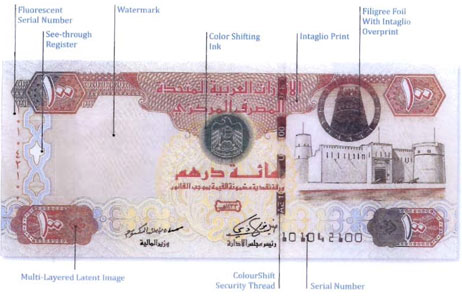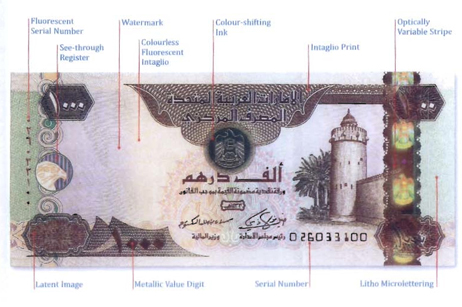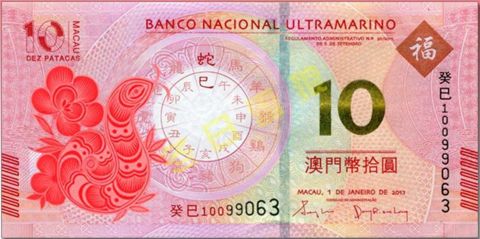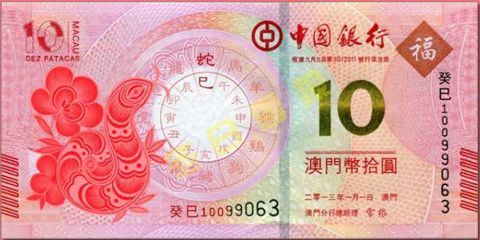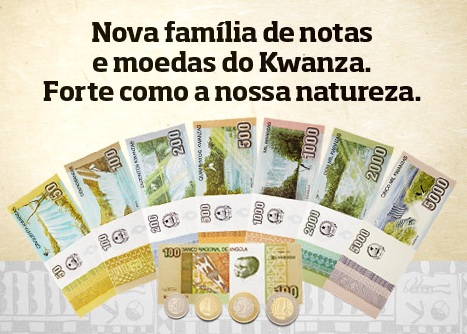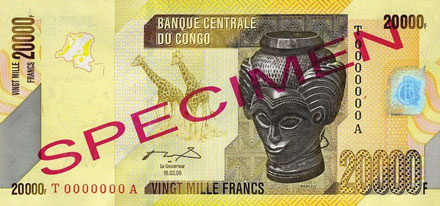Saturday I visited the Nieuwemarkt in my home town of Rotterdam. If you want to pay a visit as well, check for the square with the statue of the Virgin of Holland. The statue wasn’t the reason I was there: I came for the market where people were selling stamps, coins and banknotes. It turned out to be a very, very small market with only three sellers but they told me it was because of the cold weather.
When I looked through their books I had a bit of an argument with one of the dealers. When I aksed for the price of a banknote he gave me the price for a UNC grade. I pointed out to him it wasn’t a UNC grade because one of the corners had a little fold. He told me it was nothing and started vigorously ‘smoothing’ the fold with his thumbnail to make it flat again. “Well, now it’s DEFINITELY not uncirculated anymore!”, I told him. But he insisited he was right and he wasn’t planning to lower his price. I don’t like those types of dealers: acting like there’s a moron standing in front of them and ruining the banknotes they sell out of sheer amateurism.
Luckily for me there were also good dealers with good merchandise so I got away with four new banknotes from four new countries:
- 1 Dong (P1a) from South Vietnam
- 100 Ouguiya (P4h) from Mauritania
- 10 Rupees (P36a) from the Seychelles
- 2 Pa’anga (P32a) from Tonga

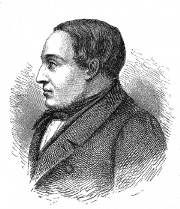 From the News of Iceland: "The development and design of a new Iceland bank note or bill, is finished. The 10 thousand ISK bill will be initiated this year, probably this spring. The first bills will come to Iceland this spring, around the same time as the Eurasian golden plover, a common bird in Iceland that will appear somewhere on the bill.
From the News of Iceland: "The development and design of a new Iceland bank note or bill, is finished. The 10 thousand ISK bill will be initiated this year, probably this spring. The first bills will come to Iceland this spring, around the same time as the Eurasian golden plover, a common bird in Iceland that will appear somewhere on the bill.
Graphic designer and artist Kristín Þorkelsdóttir developed the ten thousand ISK bank note. She says it was a lot of work, but that the bill will be beautiful. Kristin also designed the other Icelandic bills currently in use.
Jónas Hallgrímsson (1807-1845), natural scientist and poet will appear on the bill as well as the Eurasian golden plover. Jonas Hallgrimsson was interested in the plover and mentioned her in some of his poems."
Update 3 april 2013: there are reports that the new note won't be issued until the autumn or winter of 2013.
 Say what you want about the Canadians but they do know how to keep their banknotes in the news. After the flood of bad press recently, this time the news is a bit lighter. A report shows the ideas for new themes on the banknotes which have been put out to focus groups. Amongst those themes were illustrations of a gay marriage, an officer wearing a turban, and a black hockey player.
Say what you want about the Canadians but they do know how to keep their banknotes in the news. After the flood of bad press recently, this time the news is a bit lighter. A report shows the ideas for new themes on the banknotes which have been put out to focus groups. Amongst those themes were illustrations of a gay marriage, an officer wearing a turban, and a black hockey player.
?
The final images that were chosen are far less controversial. The $5 note will show robotic arms built for space programs and the $10 note a train. The $20 note depicts the Vimy Ridge memorial in France, while the $50 has a picture of an icebreaker. The Queen and prime ministers occupy the fronts of the notes.
An early version of the $100 note, illustrating the theme of medical innovations, showed a female medical researcher with distinctly Asian features. But later focus groups raised questions about her ethnicity, prompting the bank to erase the Asian features in favour of a Caucasian-looking woman.
Apparently a lot of things are controversial, looking at a list of rejected ideas which has been published nonetheless:
- Images of hockey were rejected by some as they would "glorify a violent sport."
- Suggested military images sparked controversy arising from Canada's role in Afghanistan, and from some people's preference for peacekeeping over warfare. The Vimy Ridge memorial, which was the image chosen for the $20 note, was seen as "sufficiently distant in time."
- A suggestion to depict ice wine was rejected by some because "alcohol should not be shown on bank notes."
- Proposals to depict "safe cities" and Canada's so-called "no gun" culture were rejected because the theme might not endure over the lifetime of the bank notes, e.g., cities might become more crime-ridden.
- Aboriginal art was snubbed by a few participants because "enough had been done by way of promoting aboriginal art."
- Images that included snow "may become more controversial should global warming progress," and are best avoided, said some.
- Pictures of wind turbines and solar panels were rejected because "clean energy is a controversial concept."
- Portraits of Terry Fox, Liberal Prime Minister Lester Pearson, and medicare trailblazer Tommy Douglas were all nixed.
This has caused some people to argue against the focus groups altogether. Not such a bad idea I think.
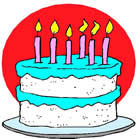 Hip hip hooray for banknote printer De La Rue. The biggest banknote printer of the world celebrated its 200th birthday yesterday. It was founded by Thomas de la Rue in Guernsey on 6 February 1813.
Hip hip hooray for banknote printer De La Rue. The biggest banknote printer of the world celebrated its 200th birthday yesterday. It was founded by Thomas de la Rue in Guernsey on 6 February 1813.
Back in 1831 it registered the ace of spades playing card produced using a revolutionary new typographical process ensuring uniformity in card manufacturing. It was subsequently granted a royal patent by William IV to print playing cards that had previously been produced by hand using stencils. In 1840 De La Rue produced its first adhesive postage stamp and in 1846 registered its patent for the first envelope folding machine. De La Rue secured its first contract to print banknotes with the Bank of Mauritius in 1860 for the Mauritius 10 shilling, £1 and £5 notes. A contract which is still active today after 150 years. In 1914, De La Rue was commissioned to produce the £1 and one shilling notes for the Bank of England: the start of another important collaboration with the Bank that continues today.
In recent years the Group has been involved in the design or production of over 150 national currencies and a wide range of security documents. In early 2011 De La Rue designed and printed currency for South Sudan, the world’s newest country, ahead of its independence later that year.
 A nice article from the Australian Herald Sun: a rare complete set of the first Australian banknotes to be issued following Federation is expected to sell for 5.5 million Australian dollars or more. It is the first time a private set of eight Collins/Allen cancelled specimen banknotes has been offered for sale. The notes date from 1913 and 1914 and include a 10-shilling note as well as a 1, 5, 10, 20, 50, 100 and a 1000-pound note, which features a flock of sheep. The sale, which is expected to set a new record for a set of Australian banknotes, will mark the 100th anniversary of their printing.
A nice article from the Australian Herald Sun: a rare complete set of the first Australian banknotes to be issued following Federation is expected to sell for 5.5 million Australian dollars or more. It is the first time a private set of eight Collins/Allen cancelled specimen banknotes has been offered for sale. The notes date from 1913 and 1914 and include a 10-shilling note as well as a 1, 5, 10, 20, 50, 100 and a 1000-pound note, which features a flock of sheep. The sale, which is expected to set a new record for a set of Australian banknotes, will mark the 100th anniversary of their printing.
The notes are known as cancelled specimens because they are marked with a large "x" and are perforated with "cancelled". Such notes were sent to central banks around the world so officials could familiarise themselves with the new currency before its public release. They are named after the two secretaries to the Treasury whose signatures appear on them, James Collins and George Allen. The private sale is being organised by Western Australia's The Rare Coin Company, which has spent the past four years assembling the set on behalf of two collectors. Rare Coin Company managing director Rob Jackman said he had already fielded a number of inquiries about the sale from around the world.
 According to this article the Catholic Bishops Conference of the Philippines (CBCP) has approved the proposal to use an image of San Pedro Calungsod on a commemorative 50 pesos banknote that will be circulated in April this year. The banknote will commemorate the canonization of Calungsod by Pope Benedict XVI on 21 October 2012 in Rome, Italy.
According to this article the Catholic Bishops Conference of the Philippines (CBCP) has approved the proposal to use an image of San Pedro Calungsod on a commemorative 50 pesos banknote that will be circulated in April this year. The banknote will commemorate the canonization of Calungsod by Pope Benedict XVI on 21 October 2012 in Rome, Italy.
Calungsod was a teenaged catechist who joined the Jesuit missionaries in the Marianas islands with Diego de San Vitores. They were both killed by the natives on 2 April 1672, which is the feast day of the teenaged saint.
According to CBCP News online, Henrietta de Villa, the secretary general of the National Commission on the Canonization of Calungsod, announced that the commemorative bill will be circulated nationwide by 2 April 2013.
 An article from the Libya Harald: "The Central Bank of Libya (CBL) has announced that it will launch the new Libyan banknotes on the second anniversary of the 17 February Revolution. It had earlier announced that it would start issuing new Libyan banknotes as of 31 January.
An article from the Libya Harald: "The Central Bank of Libya (CBL) has announced that it will launch the new Libyan banknotes on the second anniversary of the 17 February Revolution. It had earlier announced that it would start issuing new Libyan banknotes as of 31 January.
The new notes have values of one, five, ten, twenty and fifty dinars. Apparently, the LD 50 notes, previously shelved to try and control the black economy, will now be issued. The total value of the new banknotes is understood to be LD 116 billion. The Governor of the Central Bank, Saddek Elkaber, said yesterday that the new money had been printed in a record time of just ten months.
He added that the new banknotes had been modernised and improved, even including "a property that allows blind people to identify their financial value." He added that the new notes would reduce forgeries because of features such as security tags and the use of four colours. Once the new banknotes have been issued, there will be a phased withdrawal of the old ones."
So another announcement in the neverending saga (1, 2, 3) from Libya. This time around though we also have pictures from the front of the notes!
There haven't been any new additions after the large number of new banknotes I acquired at the IBNS fair in December 2012. But this week I got four new notes including two from countries new in my collection.
- Namibia, 10 dollars (P4b)
- Bahrain, 1/2 dinar (P25)
- German Empire, 100 Mark (P43b)
- South Africa, 10 Rand (P133)
 The Libya Herald reports that the long awaited new banknotes will be issued today.
The Libya Herald reports that the long awaited new banknotes will be issued today.
The Central Bank of Libya says that it will start issuing new Libyan banknotes as of thursday. The notes have face values of one, five, ten and twenty dinars. There were plans to bring in a 50 dinars note but the Bank decided against it in a bid to control the black economy. According to the Bank’s Facebook page, there will be a special event at the Bank in the morning to launch the new notes attended by the chairman, Saddek Elkaber, the vice chairman, members of the board and CEOs of other banks. The new notes arrived on Wednesday at Mitiga airbase and will slowly replace the old ones.
Given the bad information in the past about the Central Bank and the new banknotes, I will only believe it when I see it.
 The Chinese website Gobal Times reports: The National Bank of Cambodia officially issued a new 1,000-riel banknote in order to remember and dedicate to late King Father Norodom Sihanouk. A sub-decree on the issuance of the new 1,000-riel currency was signed by Prime Minister Hun Sen on Tuesday.
The Chinese website Gobal Times reports: The National Bank of Cambodia officially issued a new 1,000-riel banknote in order to remember and dedicate to late King Father Norodom Sihanouk. A sub-decree on the issuance of the new 1,000-riel currency was signed by Prime Minister Hun Sen on Tuesday.
The new note displays a portrait of late King Father Sihanouk on the obverse and a picture of a golden swan-shaped float that transported Sihanouk's body on the reverse. It main colors are pink and blue.
During his life time, Sihanouk's photos were printed on the current banknotes of 5,000 riels, 10,000 riels, 50,000 riels, and 100,000 riels. Sihanouk died of illness at the age of 90 in Beijing on October 15 last year. His body is now lying in state at the Royal Palace in Phnom Penh for the public to pay tribute. The body will be moved from the Palace to a custom-built crematorium at the Veal Preah Meru Square next to the Palace on February 1 and kept it for another three days at the site before it is cremated on February 4. About 1.5 million mourners are expected to attend the funeral, which will be safeguarded by some 11,000 security forces.
Born on October 31, 1922, Sihanouk ruled Cambodia from 1941 to 1955 and again from 1993 until his voluntary abdication on October 7, 2004 in favor of his son, the current King Norodom Sihamoni.
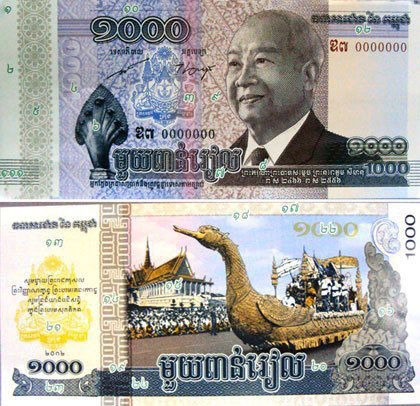
?
 News from the United Arab Emirates. The National AE reports: "the UAE Central Bank has announced plans that it will put into circulation newly reprinted 100 dirham and 1000 dirham banknotes with fresh security features on Saturday.
News from the United Arab Emirates. The National AE reports: "the UAE Central Bank has announced plans that it will put into circulation newly reprinted 100 dirham and 1000 dirham banknotes with fresh security features on Saturday.
The new features include a replacement of the metallic ink surrounding the UAE emblem by multi-coloured ink on the upper half of the front side of the two bills. A multi-coloured 3mm-wide security thread with "AED100" written on the front will also replace the current silver security thread at present. A similar multi-coloured thread will appear on the back side of the 1000 dirham bill.
The Central Bank said the overall design and other specifications of the two notes will stay the same."
Below are the new banknotes. You can see the security features in more detail for the 100 dirham and for the 1000 dirham. More information about security features in general can be found in this article.
Recently I wrote the following text in a post about the Lunar New Year.
Macau has authorised the Banco Nacional Ultramarino (BNU) and the Bank of China from 2012 to 2023 to issue a maximum of 20 million special notes with a face value of 10 patacas for the forthcoming Lunar Year of the Snake. Last year with the Year of the Dragon 'only' 10 million notes were printed which led to ridiculous speculation. Especially the banknotes with one or more 8's at the end of the serial number were sold for top prizes.
According to this article the rush for special banknotes has still overwhelmed the servers of the Banco Nacional Ultramarino. To be honest: the special banknotes do look very nice.
 Luanda Angola Reserve Bank (BNA) announced it will release officially a new banknote series on Tuesday.
Luanda Angola Reserve Bank (BNA) announced it will release officially a new banknote series on Tuesday.
Update: From March to June the new series will be gradually introduced in the economy and will circulate simultaneously with the current ones. The new series has notes of 50, 100, 200, 500, 1000, 2000 and 5000 Kwanzas. The 10.000 Kwanza note will only be released "as necessary".
The new signature on the euro banknotes by Mario Draghi has now also been confirmed for banknotes of 100 euro. More info on the signatures on the euro banknotes can be found in this post.
Source
The Banque Centrale du Congo has released the 20.000 francs note into circulation.
« Vorige Pagina |
Toon berichten 1036-1050 van 1227 |
Volgende Pagina »
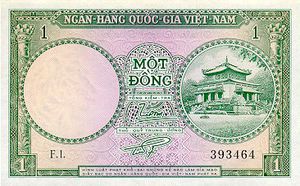

 From the
From the 
 Say what you want about the Canadians but they do know how to keep their banknotes in the news. After the
Say what you want about the Canadians but they do know how to keep their banknotes in the news. After the 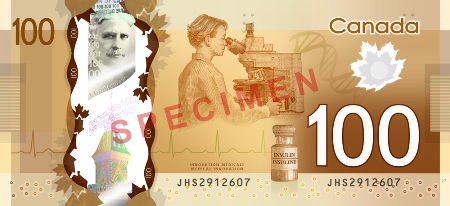
 Hip hip hooray for banknote printer
Hip hip hooray for banknote printer  A nice
A nice 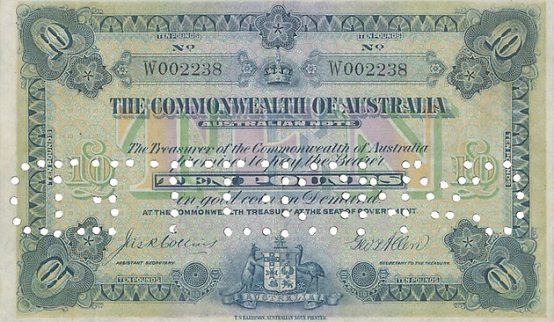
 According to this article the
According to this article the  An
An 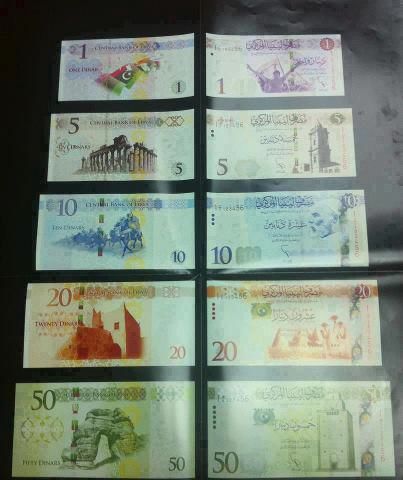
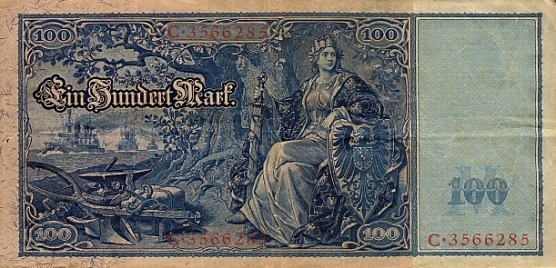
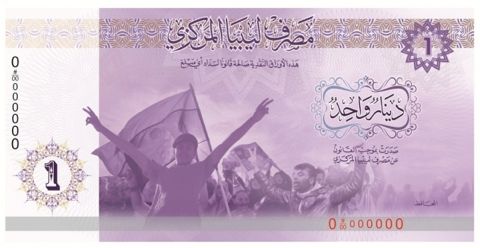
 The Chinese website Gobal Times
The Chinese website Gobal Times 
 News from the United Arab Emirates. The National AE
News from the United Arab Emirates. The National AE 